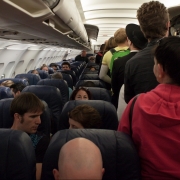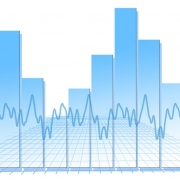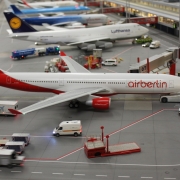Featured Publication: A study found the negative effect of the competition on price dispersion
In the paper entitled: “Does competition reduce price dispersion? New evidence from the airline industry”, Gerardi and Shapiro [1], financial economists from the Federal Reserve Bank of Atlanta and the Bureau of Economic Analysis, respectively, investigated how competition affects the dispersion and discrimination of airline prices.
Price dispersion is an economics term that refers to the fluctuation of prices across markets and sellers of identical items. The difference between price discrimination and dispersion is that the former refers to a situation when a single seller charges different customers different prices for an identical product, while the latter involves multiple sellers that charge different prices for the same product.
In this work, panel data (multi-dimensional data involving measurements over time) is leveraged to understand the changes in price dispersion when more carriers’ service on a particular route is added. In the panel data, an observation is a flight from a particular airline, in a specific route, and a specific time period. The main focus of the study is on direct, domestic coach‐class airline tickets over the first quarter of 1993 and the third quarter o 2006. Specifically, the airfare prices are derived from the DB1B database. Additional route characteristics are obtained from the Bureau of Transportation Statistics‘ T‐100 Domestic Segment database. Using popular techniques such as Gini coefficient regressions and price percentile regressions on this data, several interesting results and conclusions are drawn. For example, the authors conclude that the rise in competition over time leads to a reduction in price dispersion. Specifically, this effect is significant in markets with heterogeneous travelers (business and leisure) rather than in routes with homogeneous customers (e.g., leisure destinations). Additionally, the study shows that this negative relationship between price dispersion and competition is dependent on the business cycle, and this effect is enhanced during peaks in the business cycle and vice-versa.
These results contrast with the ones obtained by Borenstein and Rose [2] in 1994 mainly due to the different time periods of the datasets as well as the differences in the estimation techniques: the panel data used in Gerardi and Shapiro’s work versus the cross-sectional data used in Borenstein and Rose’s work. In other words, departing from prior cross‐sectional studies, this study considers the changes in the number of carriers on a particular route over time.
References:
[1] Gerardi, K., & Shapiro, A. (2009). Does Competition Reduce Price Dispersion? New Evidence from the Airline Industry. Journal of Political Economy, 117(1), 1-37. doi:10.1086/597328
[2] Borenstein, S., & Rose, N. (1994). Competition and Price Dispersion in the U.S. Airline Industry. Journal of Political Economy, 102(4), 653-683. Retrieved from http://www.jstor.org/stable/2138760













